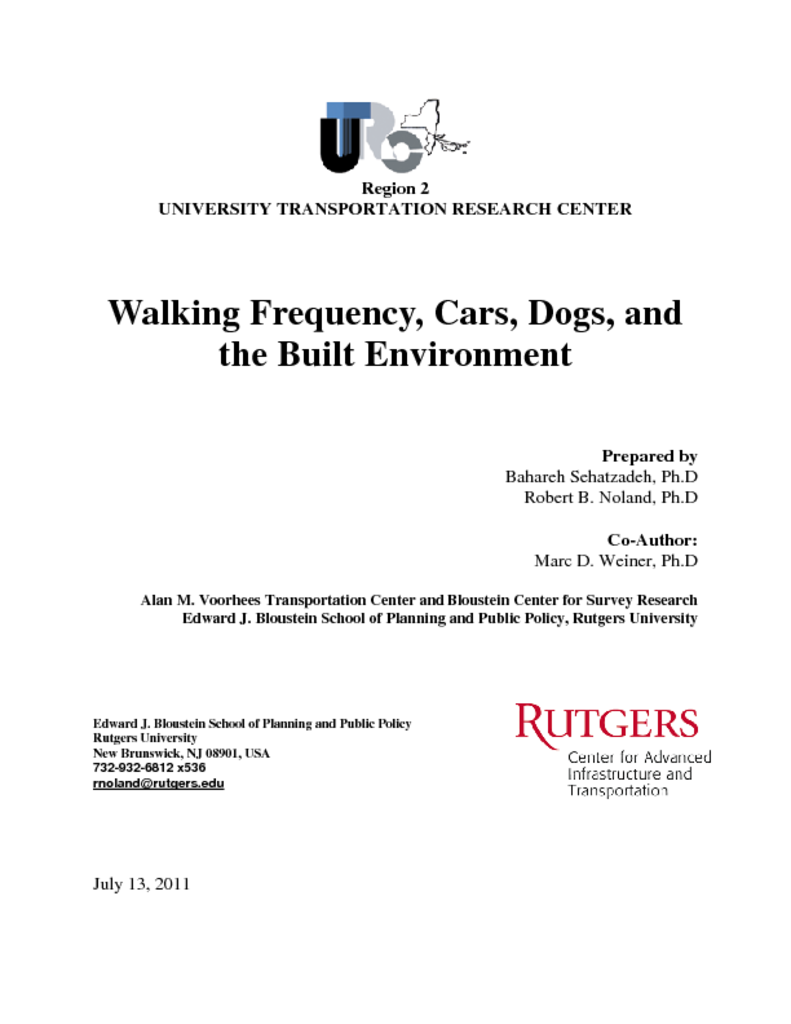This report explains ways to reduce car usage in order to meet climate targets and how to analyze these effects. Much of the analysis has focused on differences between more compact areas that are more walkable versus more extensive car-dependent areas. Given our interest in physical activity (to combat obesity) we are interested in overall walking similar to studies such as (Berrigan, Troiano 2002) which also evaluated all walking trips jointly. Several studies have previously assessed the relationship between dog ownership and walking in the broader context of the effects of pet ownership on human health. In spite of the variations in methods and results these studies draw the same conclusion that dog owners are more physically active (primarily through walking their dog) than non-owners ((Bauman et al. 2001, Cutt et al. 2007, Cutt et al. 2008a, Brown, Rhodes 2006, Ham, Epping 2006, Oka, Shibata 2009, Owen et al. 2007, Serpell 1991, Sirard et al. 2011). It has generally been acknowledged that residential self-selection explains a part of the observed walking behavior in more walkable neighborhoods; that is, individuals who prefer to walk (or do not like to drive) will choose to live in more walkable neighborhoods.


